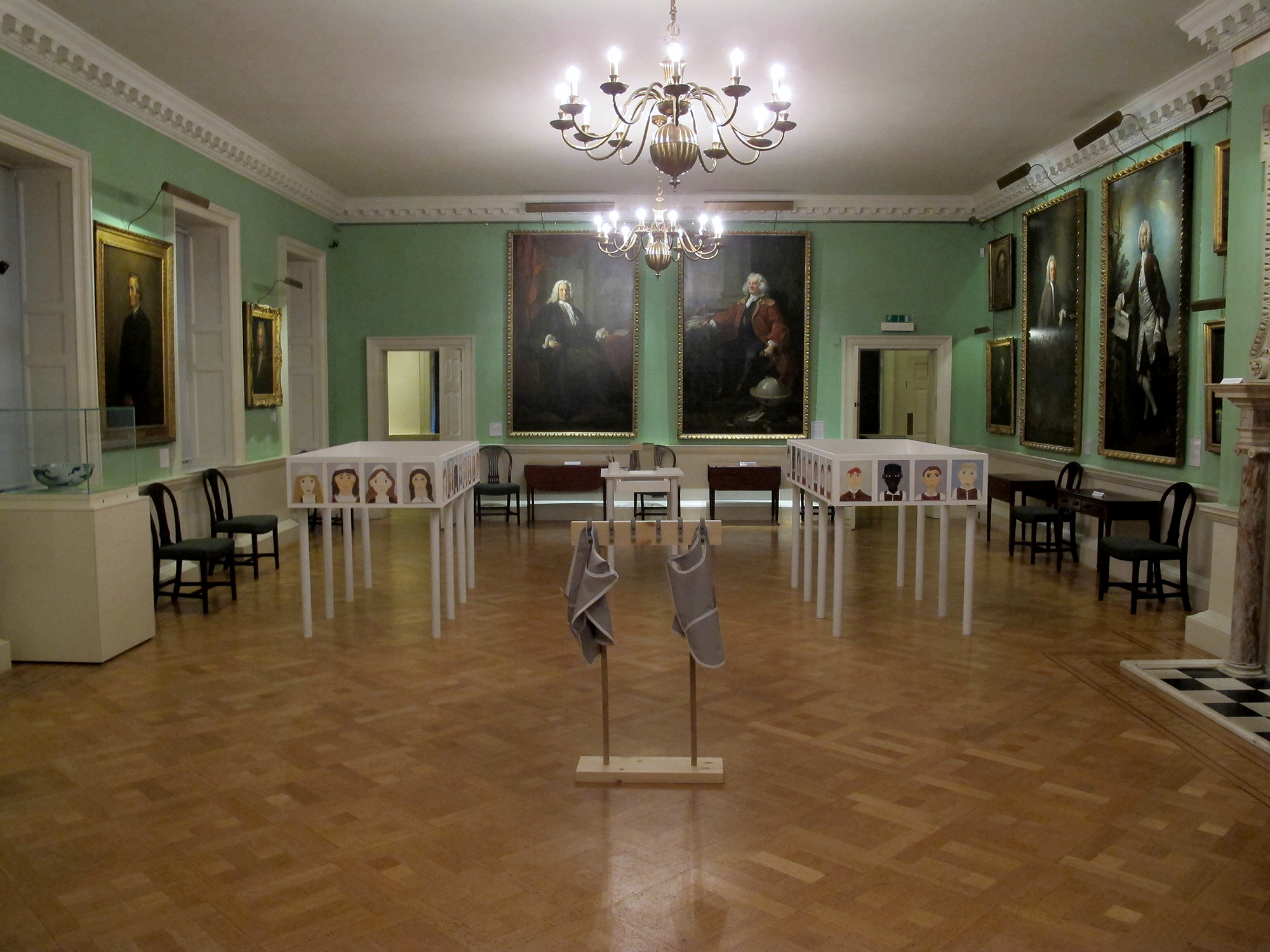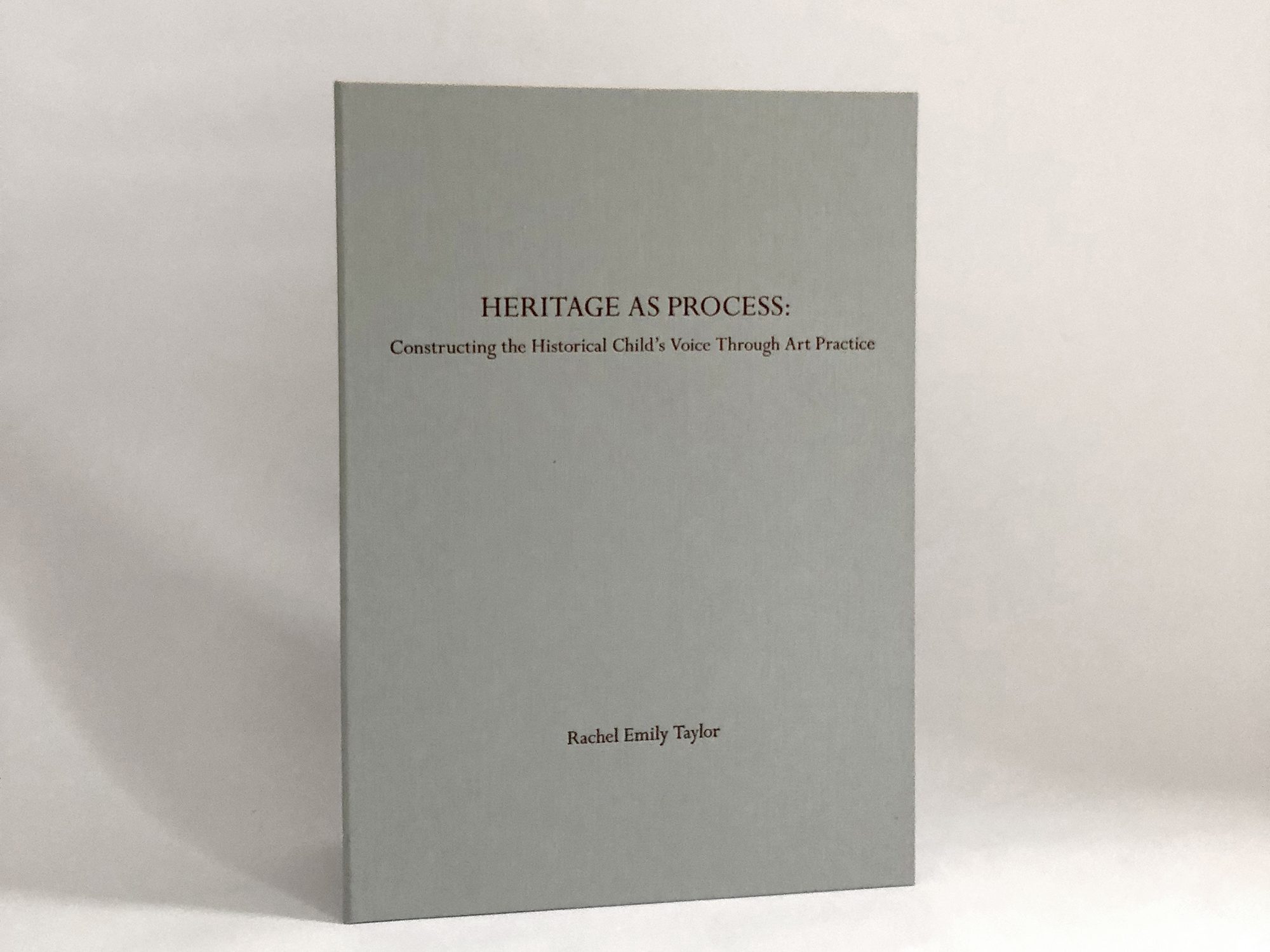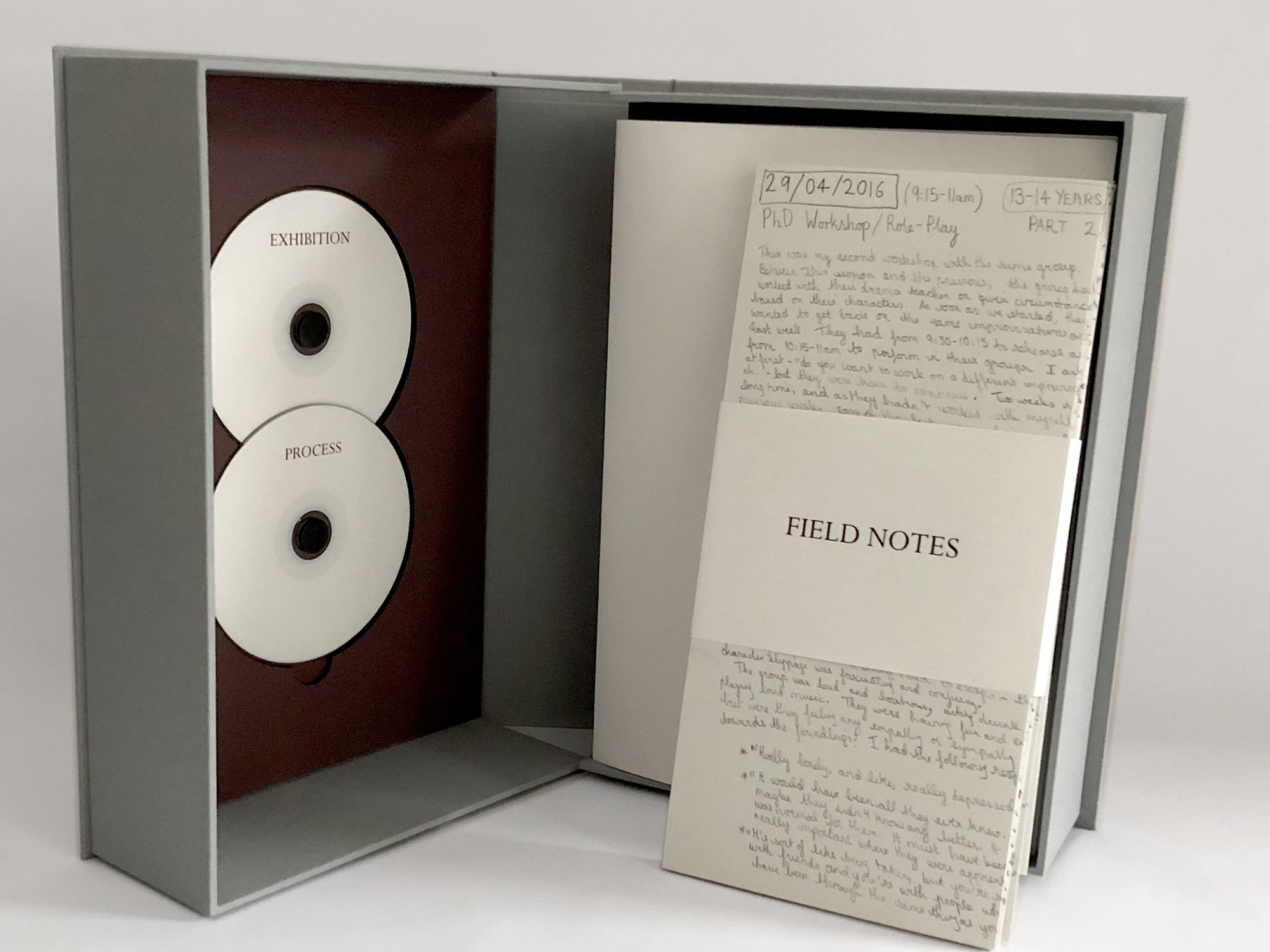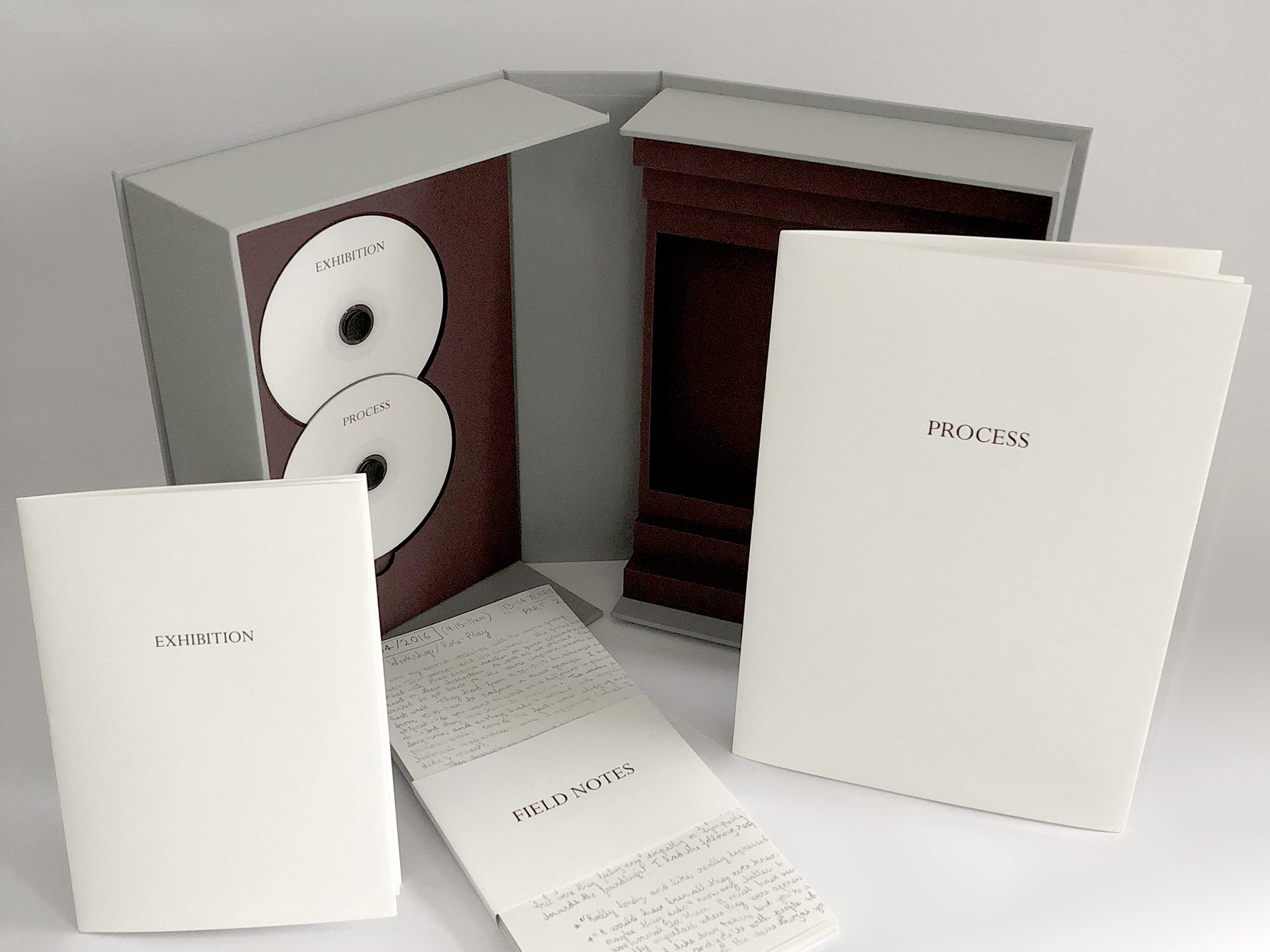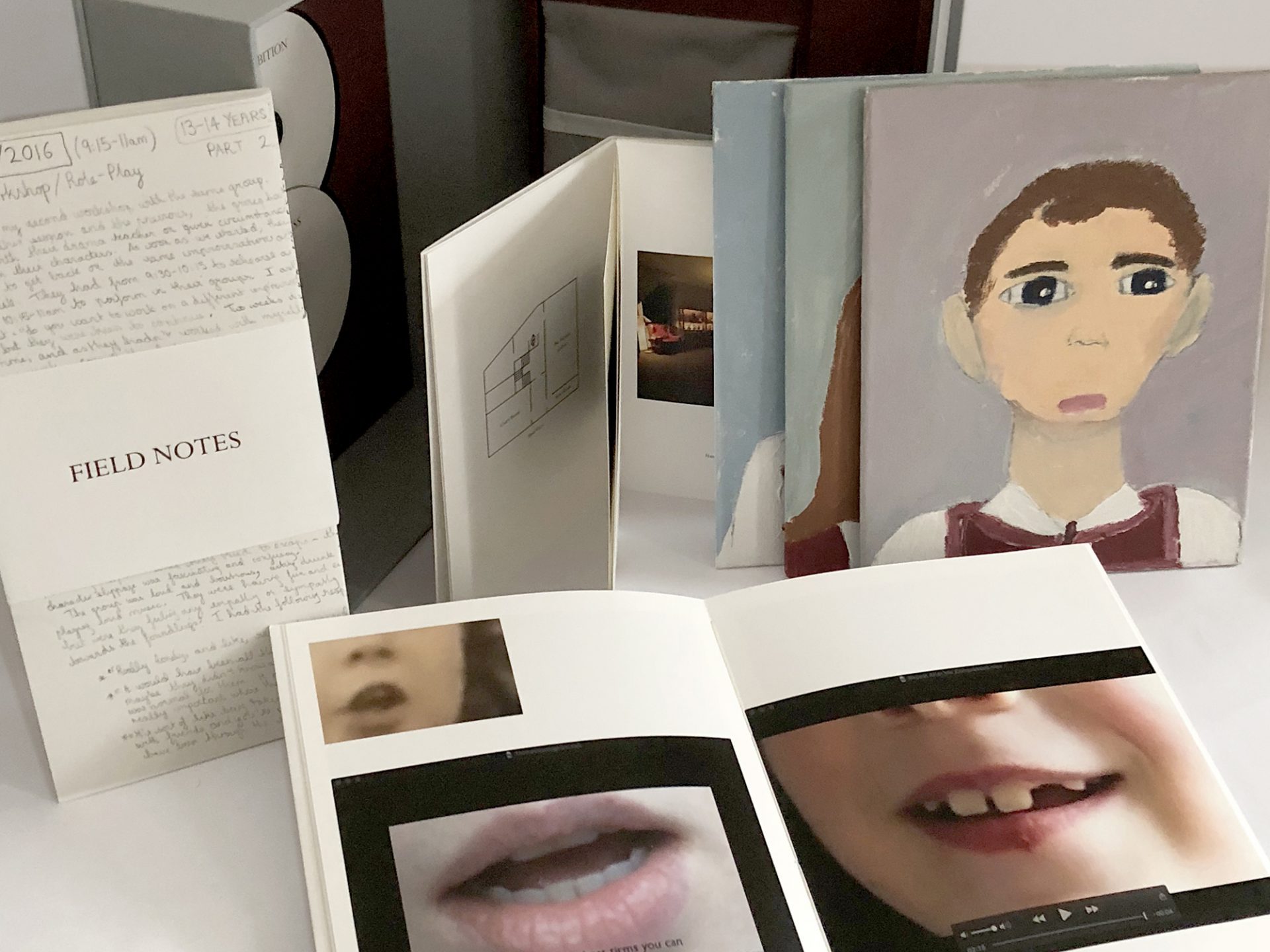Heritage As Process:
Constructing The Historical Child’s Voice Through Art Practice
PhD 2014 – 2018
AHRC Studentship
David Harvey describes heritage as a ‘process’ that is not inert and takes place in the present (2010). In heritage practices there are opposing discourses and positions. Artists add another voice to the discourses of heritage and have been described as ‘critical figure[s] in the heritage process’ (Howard, 1998) because they present institutional critique, craft new heritage, and open up ‘Authorised Heritage Discourse’ (Smith, 2006). This role is explored through practice and the critique of works by artists, including: Corin Sworn, Andrea Fraser, and Danh Vo. This study challenges how art and artists are used in heritage practices, and proposes that artworks that have not been commissioned by heritage institutions can still be used to critique the processes of heritage.
The study focusses on historical biographies at the Foundling Museum in London: a ‘museum of childhood’ (Harris, 2013). In current heritage practice, children are regarded as passive and their role is ‘obscured’ (Smith, 2013). In the Foundling Museum there is a tension of ownership that stems from the lack of separation between the histories of children and the history of childhood. Often, the adult voice is represented rather than that of the child. Children are often voice-less in the preservation of their history, as this process is generally undertaken by adults on behalf of thechildren or ‘perhaps for their childhood selves’ (Smith and Pascoe, 2013). Many scholars still fail to differentiate histories of children, which concern actual practices of young people, from histories of childhood that are ideological concepts adults hold of children.
I explore how the voice of the child might be ‘found’ or reconstructed, using art practice as a form of interrogation. The facilitation of workshops with contemporary children provided material to construct the historical child’s voice. The workshops explored the children’s empathetic engagement to the foundlings through role-play and art making; alongside examining the boundaries of freedom and control. Field notes were employed as a method of documentation and critical analysis when photography of children was not permitted due to ethical considerations. Finally, curation of situated artworks were employed as a method to test the communication of the historical voice in the museum.
The research was led by the following aims:
• To understand and analyse the representation of the individual or ‘character’ in contemporary museum practices.
• In the museum, to explore how art practice might communicate the historical person’s ‘voice’ and examine the value of multiple ‘voices’.
• To analyse the under-representation of the historical child in the museum and to explore how art practice and workshops with children might capture the voice of children instead of the institutionalised history of childhood.
Director of Studies: Dr Becky Shaw
Supervisors: Dr Sharon Kivland, Dr Deborah Middleton
Examiners: Dr Joanne Morra, Penny McCarthy
